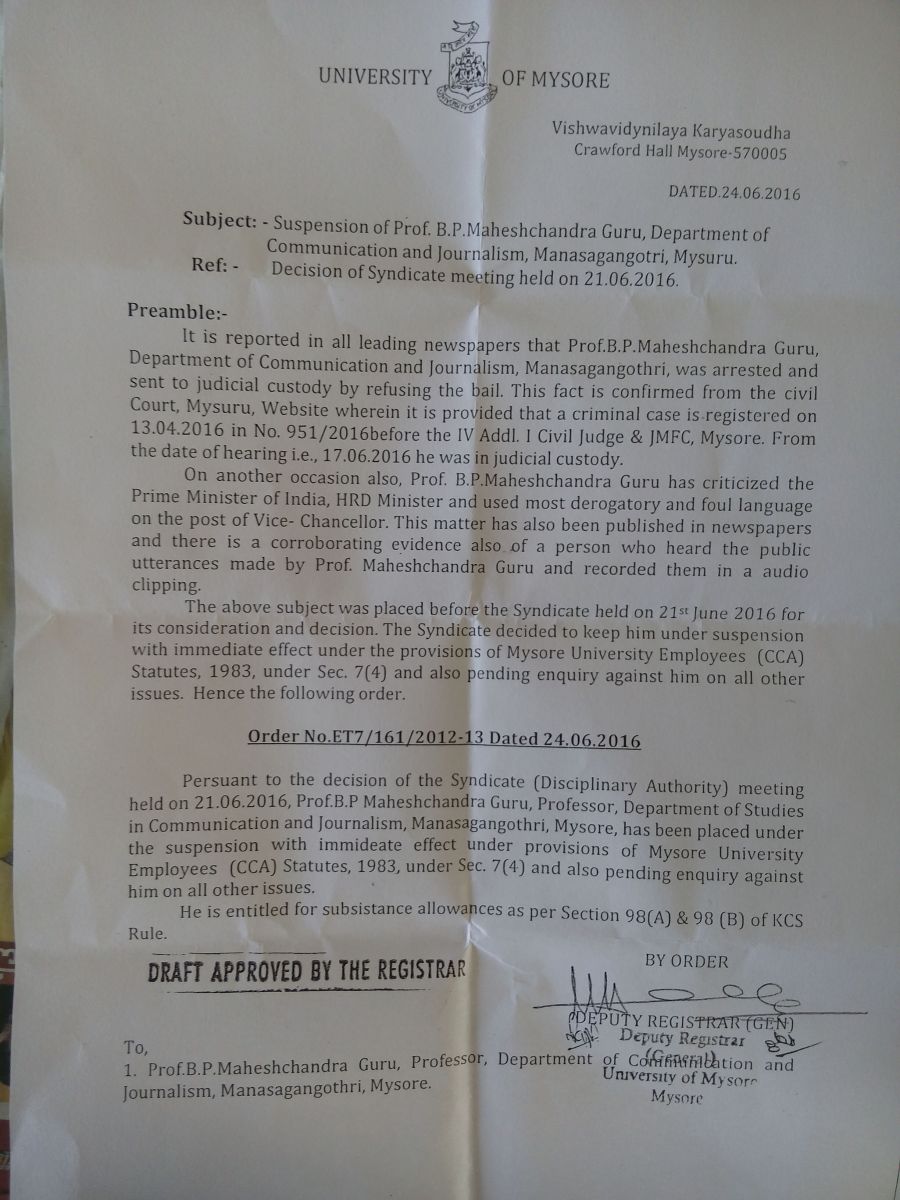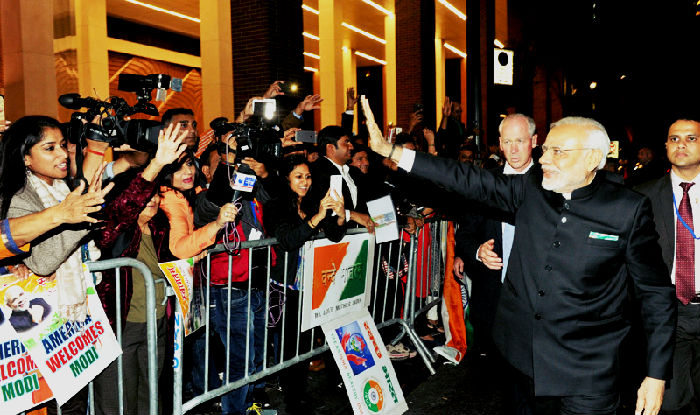
Recently, I received the opportunity of a lifetime when I was invited to attend Indian Prime Minister (PM) Modi’s address to the joint session of US Congress on June 8, 2016. When I got the call from Congressman Nolan’s office, I was surprised to say the least. I am not involved in politics, I did not know Rep. Nolan personally, and have not made any significant monetary contributions to politics in either country. My first reaction was to say no, because PM Modi and I could not be further apart on the political spectrum. But soon the significance of what had happened dawned on me.
I, an Indian American, an academic, had just received an invitation from a US Congressman who knew about my work and had picked me to be his guest. As a minority in both countries, a Christian minority in India and an ethnic/ racial minority in the US, I was invited to a place of power which typically would be inaccessible to a person like me. Ironically, as an Indian-American I had more access to a transnational political arena than as an Indian living in India. I arrived in DC with eager anticipation not knowing what would unfold.
Attending PM Modi’s address has provided me with unique insight into transnational politics and my own identity as an Indian-American and one who is “not a Hindu”. As I was sitting in the gallery with other Indian Americans, I realized that in a post-liberalisation world where political contributions flow easily across borders, Indian Americans play a huge role in the political economy of India and the message of Hindutva has become the single most powerful way to unite this group.
The term Hindutva refers to a nearly hundred year socio-political project promoted by right wing Hindu nationalist groups, which redefines people living in India as “Hindu” based on geographic, racial, and cultural identity. The Hindutva project is centred on the “invention of archaic Vedic Hinduism” and Vedic Aryanism and the belief that “…it was in India that Aryans had either originated or achieved the pinnacle of their culture and civilization which they had then bestowed on the world”.
While Hinduism has been known for being a diverse religion, Hindutva’s project is to construct a homogeneous Hindu community through universalizing upper caste practices and values to all castes and classes. [1]
The end goal of Hindutva is to reconstitute India as a “Hindu Rashtra” or Hindu nation by creating solidarity among Hindus across the globe.
In Hindutva ideology, Muslims, Christians, and other Indian religious minorities are seen as foreigners because they do not pay homage to the religious and cultural values of Vedic Aryanism.
This view is antithetical to the Indian Constitution that I grew up with, which emphatically defines India as a “democratic, secular, socialist republic”. This view is also antithetical to what many Hindus living in India believe, even though they may inadvertently be involved in exclusionary practices.
Speech and discourse are integral to political power both in the US and in India. In this essay, I show that PM Modi’s speech while typical in terms of speeches made by foreign heads of state was strategically written and coded in ways to reach specific audiences, but none of them were me. The speech delivered to the US House of Congress had two audiences: US Congress Members and elite Hindu Indian-Americans.
After a brief introduction to Narendra Modi, in what follows, this essay discusses three particular Indian-American audiences this speech was geared towards: the Seemingly Secular Hindu Capitalist (SSHC), the Hindu Nationalist Capitalist (HNC), and the Culturally Insecure Sidelined Hindu (CISH). I use my observations and conversations with other Indian-Americans at the event to elucidate latent meanings, and when necessary, draw on commentaries by other writers to hone the argument.
The essay draws out contradictions between the content of the speech itself and facts on the ground, which is fundamentally a question of accountability. PM Modi’s speech had four manifest themes:
(a) India and America’s shared ideals
(b) India’s strong economy
(c)Mmilitary and civil nuclear partnerships, and
(d) India’s role in global governance.
However, if one looks more closely at the text, PM Modi’s speech belongs to the genre of speeches that perpetrates symbolic violence against disenfranchised communities by not giving an account of what has happened to these communities under his watch. PM Modi perpetrates symbolic violence through erasure and misrepresentation of realities. In the United States, we have seen this happen time and time again with Native communities and African American communities, where stories of the past and present are whitewashed to tell particular nationalist versions of reality (Feagin 2013, Bonilla-Silva 2010).
The views expressed here are mine and mine alone (unless attributed) and this piece should be read as an opinion piece written by an academic.
Hindutva, the RSS, and Modi
PM Narendra Modi was elected to office in 2014, but has a long disturbing history in Indian politics. Modi entered politics as a young man in the Rashtriya Swayamsevak Sangh (RSS), the Hindu nationalist right wing party and main proponent of Hindutva.
The RSS was started in 1925 by a Brahmin, Keshav Hedgewar, a man who saw Nehruvian secularism as a “western import” [2] As official policy, the RSS did not join the anti-colonial satyagrahis and civil disobedience movements in the 1920s, but had longstanding disputes with Gandhi and Nehru. These feuds ultimately led to Gandhi’s assassination in 1948 by Nathuram Godse, a member of the RSS (although the RSS now strenuously denies his membership.) The RSS has been banned three times in India since 1947 for anti-national activities. [3]
It is in the RSS that PM Modi spent his early years in politics, and in 1987, entered the mainstream political party of the RSS – the Bharatiya Janata Party (BJP). In 2001, Modi became the Chief Minister of Gujarat and catapulted to fame during the Gujarat genocide of Muslims of 2002. Briefly, in retaliation to the setting on fire of a train carrying Hindu pilgrims allegedly by Muslims, thousands of Muslims were killed, 20,000 Muslim homes and businesses destroyed, and 360 Muslim sites of worship were decimated.
It is widely believed that Modi and the BJP party were complicit in these acts both instigating the Hindu mobs and doing nothing to stop the rampage. Modi was banned from the US and the UK for about a decade because of his role in the massacre. In 2009, a special investigative team convened by the Indian Supreme Court found no conclusive evidence to prove Modi’s guilt. Amid dissent from human rights groups in India, Modi was reelected as Chief Minister of Gujarat in 2007 and 2012.
In June 2013, a campaign began in full force to elect Modi as Prime Minister. In this campaign, plush with corporate funds (“Narendra Modi rode wave of money to Indian victory”, Financial Times May 19, 2014) and managed by professional relations firms, Modi adopted a more mainstream approach and campaigned on a pro-business platform capable of turning around India’s economy with the slogan Achhe din aane waale hain or “Good days are coming”. His campaign was the first of its kind in Indian politics- a savvy American-style political campaign. In May 2014, he won the election in a landslide victory defeating the Indian National Congress.
Over the last two years, the influence of right wing Hindutva ideology on Indian democracy could not be more pronounced. There have been elevated physical attacks on religious minorities and minority-run schools and places of worship. Beef bans have been instituted in many states [4, 5] and more mundane intimidations instituted such as declaring December 25th as “Good Governance Day” with many schools replacing Christmas Day in the academic calendar with Good Governance Day [6]. There has also been censorship of human rights groups, rewriting of history text books to promote Hindutva agenda, imprisonment of so called “unpatriotic” students and academics, and media censorship [7, 8]
Even as PM Modi has risen to power with two main messages: Hindutva and economic progress, my own intellectual trajectory over the last 15 years could not be more different. I was born and brought up in India believing the constitutional dictum we were made to repeat in school – “India is a democratic, socialist, secular, republic”.
I moved to the US as a graduate student in 2001 and recently became a US citizen. I now belong to the three million and growing Indian-American community in the US. I also have the unique distinction of being a minority is both countries – a Christian minority in India and a racial/ ethnic minority in the United States.
It is in the backdrop of these positionalities that I have spent the last 15 years of my life studying social justice issues in both countries. I have spent the last five years setting up a Study Abroad course, along with my academic spouse, which takes students to Bangalore to learn how local civil society organizations mobilize against barriers of gender, class, caste, and religion. I was invited by my Congressman to attend PM Modi’s address because of this course.
Given my particular background, I am in a position to respond to Modi’s speech with a view from the gallery, if you will. As someone who was neither a participant nor the audience for the speech, I was able to catch a glimpse of the way PM Modi imagines communities, constructs boundaries around communities, and reinforces the Hindutva imaginary.
The gallery in the US House of Congress with it small seats was a tight fit. From my observations, besides the spelling-bee champion and a few scattered academics, the majority of Indian-Americans present were elite businessmen and mostly upper caste Hindus. There was a small smattering of women, but most as accompaniments to their male counterparts. These were some of the wealthiest and most powerful people in the Indian-American community with vast influence over the Indian economy and politics. They knew and greeted one another. They knew the Indian ministers present down below and pointed them out to each other.
As a critical communication scholar, I have been trained in how to both produce and analyse messages through a critical lens- this means to look at language and meaning carefully paying attention to the social, political, and cultural context surrounding the speech event. In my analysis there were three audiences in the gallery that PM Modi’s speech was addressed to: the Seemingly Secular Hindu Capitalist (SSHC), the Hindu Nationalist Capitalist (HNC), and the Culturally Insecure Sidelined Hindu (CISH).
The Seemingly Secular Hindu Capitalist (SSHC)
Much of the speech was addressed to the “seemingly secular Hindu capitalist” (SSHC) within this group of elite Indian Americans. For the SSHC, the language of a “strong economy”, prosperity, trade, investment, science and technology, deregulation, and economic growth rates are of critical importance since his primary goal is the creation of wealth and profit. Some statements directed towards this audience are:
India’s strong economy, and growth rate of 7.6% per annum, is creating new opportunities for our mutual prosperity.
Ties of commerce and investment are flourishing. We trade more with the U.S than with any other nation. And, the flow of goods, services and capital between us generates jobs in both our societies. As in trade so in defence. India exercises with the United States more than we do with any other partners. Defence purchases have moves from almost zero to ten billion dollars in less than a decade. Our cooperation also secured our cities and citizens from terrorists, and protects our critical infrastructure from cyber threats.
Despite PM Modi’s assertions about economic progress, in recent months, national and international newspapers have questioned this reality. They argue that the Modi government has failed to capitalize on the promises made during the elections and worse, there is suspicion that the numbers have been fudged and the economy is weaker than the government is reporting [9, 10,11] .
Furthermore, while much of the speech focused on the India’s alleged economic growth rate of 7.6%, PM Modi remained silent about India’s human development rate. In 2015, India ranked 130 on the human development index compared to Sri Lanka at 73 and Afghanistan at 171. India is home to 90 billionaires with a combined net worth of $295, but India is home to one of the largest number of hungry people at 194.6 million.
Undernutrition remains a silent epidemic with 51% of women between 15-59 years being anemic. States like Mizoram and Meghalaya have the highest child sex ratio of 971 girls to 1000 boys, while Haryana has the lowest with 830 girls to 1000 boys; a ghastly indicator of female feticide and infanticide. The list goes on. [12]
Compare these statements to the opening remarks made by PM Nehru in 1949 to the US Congress. Nehru was also an upper caste Hindu, but one who struck that respectful balance between national pride and truth.
India is industrially more developed than many less fortunate countries and is reckoned as the seventh or eighth among the world’s industrial nations. But this arithmetical distinction cannot conceal the poverty of the great majority of our people. To remove this poverty by greater production, more equitable distribution, better education and better health, is the paramount need and the most pressing task before us and we are determined to accomplish this task.
Next, for the SSHC, social, moral, civic, and environmental values take a backseat to the creation of wealth. This was clear because many times during the speech India was positioned as becoming the 21st century site of the advanced production and consumption of goods, without any qualification or caveats being offered. This is an example:
The genius of Norman Borlaug brought the Green Revolution and food security to India.
I, an Indian American, an academic, had just received an invitation from a US Congressman who knew about my work and had picked me to be his guest. As a minority in both countries, a Christian minority in India and an ethnic/ racial minority in the US, I was invited to a place of power which typically would be inaccessible to a person like me.
This statement is inconceivable in the face of reports showing that more than 250,000 farmers have killed themselves in the last decade precisely because of industrial agriculture – the system of chemically intensive food production that continues to wreak havoc on farmers and the land. [13]
Here is another statement:
As the U.S. businesses search for new areas of economic growth, markets for their goods, a pool of skilled resources, and global locations to produce and manufacture, India could be their ideal partner.
Despite an earlier reference to Gandhi, this statement seems to have been taken from the manuals of the colonial British East India Company. India a market for produced and finished goods? India a place for the use and exploitation of natural resources and labor resources?
In the globalization literature, this is not called “business friendly”, but rather a “race to the bottom” – a situation where poor countries compete with other poor countries to provide the least restrictions for rich countries to do business in. I waited for caveats to come, but they never did. It was a full throttle selling of India and its people. Make in India, or did India just get made?
This however should not be surprising given that the BJP espouses a rather vague political ideology of “integral humanism” formulated in 1965 by Deendayal Upadhyaya from the RSS. Integral humanism is directly opposed to Nehruvian state planning, Marxist communism, socialism and welfare, as well as capitalism and democracy, which according to Upadhyaya, have all failed in practice. [14] As a solution, Upadhaya looks to “Bharatiya culture” for an answer and finds it in the golden age of Vedic Aryanism, where quite generically, the “Progress of man means progress of the body, mind, intellect and soul of man, all together”. [15] In practice however, integral humanism is interested in the honing of individual wealth and caste-related virtues, but remains dismissive of the value of equity, social justice, and integrated communities.
I refer to members of the SSHC group as “seemingly secular” because even while they follow their Hindu religious traditions, they seem reasonable and rationale, do not openly espouse Hindutva ideology, do not appear to be religious fundamentalists, they likely engage in charitable works and can typically carry on a conversation about equity for at least a few sentences. However, while this group is for the creation of wealth, it is not clear whether this group is against the message of Hindutva. People in this group typically do not empathize or sympathize with the terror that religious and caste minorities experience, they do not believe that disenfranchised groups are genuinely disenfranchised, they will never speak out or stand with oppressed groups, they typically do harbor suspicions that there is something “foreign” about Indian Christians and Muslims, they are most often unaware of social realities in India, and finally, when they are made aware, they minimize the significance of these realities and rationalize the un-democratic actions of the government in the name of “the economy”.
After the speech, I spent a couple of hours over lunch talking to an Indian American Hindu businessman originally from Mumbai, let’s call him Mr. Ravi. Mr. Ravi told me that he was one of Modi’s key advisors prior to his election in 2014 when he was banned from the US. He said to Modi: “If you run for PM, you will win, if you win, no one will ever stop you from entering the country again.”
Mr. Ravi was part of the inner core of the Indian business community who advised Modi to invest in changing the image of India for more foreign investment to occur. The Make in India campaign was the result. I asked him, but what about social issues? He started to talk about Modi’s history, he meant the economic growth rate, but I said “Exactly, what about Modi’s history of terror? Does that not matter?” He did not answer this question directly (in communication, we call this “strategic ambiguity”), but instead tried to persuade me how first economics has to change through increased employment, and after that we can look at social issues. I think economists call this “trickle-down economics”.
Ravi understood the basic economic principle that money cannot trickle down in societies stratified by race, gender, religion, class, and caste – that the wealth of a family does not guarantee the physical wellbeing of children within the family and that economic growth rates do not ensure that rights of women and religious minorities are protected. However, Mr. Ravi’s goal is to protect the economic interests of Indian-Americans in the formal sector, large Fortune 500 companies, and the right-wing politics of Modi facilitates this agenda.
Mr. Ravi, an upper caste Hindu man, who giggled and said he was a vegetarian at home, but not outside the home, did not present himself as a right-wing Hindu fundamentalist, but one who was interested in capital, profit, and investments. I believe if there was a way to profit out of protesting genocide, he would be all ears and all in, but still remain neutral.
The Hindutva Nationalist Capitalist (HNC)
Important segments of PM Modi’s speech were addressed to the Hindutva Nationalist Capitalist (HNC). Consistent with Hindutva ideology, “true Indians” are Hindus, who form a cohesive and culturally superior ethnic and racial group dating back several millennia to the time of the Vedas. To build a Hindu Rashtra, the imaginary of India as a sacrosanct land with a glorious history and tradition must be preserved at all costs. Thus, for the HNC, image is everything. In the speech, Hindutva ideology was evident both in what was said and what was not said.
Of course, it is not unusual for foreign heads of states to play up images of their countries when giving a foreign address, but PM Modi’s speech did much more. There was an exaggerated glorification of Indian democracy combined with blatant untruths about the socio-political realities facing Indian citizens today. Below are some examples:
Today, across its individuals and institutions, in its villages and cities, in streets and states, are anchored in equal respect for all faiths; and in the melody of hundreds of its languages and dialects. India lives as one; India grows as one; India celebrates as one.
But, all the 1.25 billion of our citizens have freedom from fear, which they exercise every moment of their lives.
India is undergoing a profound social and economic change. A billion of its citizens are already politically empowered. My dream is to economically empower them through many social and economic transformations. And to do so by 2022, the seventy-fifth anniversary of India’s independence.
If we were to believe these statements, poverty, religious, and communal violence, and environmental abuses are no longer issues in India. These statements create, construct, and enforce a particular image of India today without even a passing glance at human rights and constitutional failures. What about Indian citizens from the north-eastern states who are physically violated because of particular racial features? [16] What about the attacks on Christian schools using the politically constructed charge of “conversion”? [17] And yes, what about the “mothers who were skewered, children set on fire, and fathers hacked to pieces” at Gulbarg and the widow of Mr. Ehsan Jafri who still cries out for justice on NDTV? [18] The government’s silence on these matters is deafening.
Next, PM Modi’s reference to Dr. B.R. Ambedkar can only be understood in light of Hindutva’s end game of creating a Hindu Rashtra by generating solidarity among Hindus. PM Modi surprised some of us when he said:
The genius of Dr. Bhimrao Ambedkar was nurtured in the years he spent at the Columbia University a century ago. The impact of the U.S. constitution on him was reflected in his drafting of the Indian constitution some three decades later.
Finally, I should point out that just as all Americans are not fans of Trump, not all Indian-Americans or even Hindus are fans of Modi. Although not reported in the media, there were at least 200 Indian-American protestors whom I saw outside of the US Capitol on June 8 protesting Modi’s visit. They stood silently, they played their dhols, and they held up placards that read “murderer”.
This statement from PM Modi is surprising and significant because Dr. Ambedkar, an unsung hero in mainstream Indian political discourse, is very unpopular among elite Hindus. Ambedkar who inscribed the line “democratic, socialist, secular republic” in the Indian constitution was one of the biggest, loudest, and harshest critics of Hinduism – and Hindus. Ambedkar was born a Hindu “untouchable”, “outcaste,” or “person without a caste”, a historically oppressed community in Indian society- today referred to as Dalit. In 1936, Ambedkar published his undelivered speech titled the Annihilation of Caste, where he destroys any rational argument for caste and notes that the only way to destroy caste was to destroy its religious foundations. [19] Ambedkar encouraged untouchables to convert to other religions and he himself converted to Buddhism a few years before his death. Indeed, Dalits today do not see Gandhi as their Mahatma, but Ambedkar. So why would PM Modi reference Ambedkar?
Analysts argue that the politically vocal Dalit constituency will determine the future of the BJP party in India. Dalits constitute approximately 17% of the Hindu population in India, [20] so if Dalits cease to identify as “Hindu” as recommended by Dr. Ambedkar, the Hindu majority is in danger of becoming a minority. Thus, is the last few years, the BJP government has been wooing the Dalit community with feeble attempts to “integrate” the community with caste Hindus. Of course, the RSS want to do this without “annihilating caste” and despite all the political courting, violence against Dalits continues. In sum, when PM Modi referenced Dr. Ambedkar, it was an open attempt at consolidating the Hindu vote by momentarily holding up a Dalit icon.
But we should ask PM Modi – as much of the Indian news media have: what about Rohith Vermula, the 26-year-old Dalit student, a member of the Ambedkar Students’ Association who was hounded to death by the student wing of the BJP? What about the Dalit men and women beaten and hacked to death in “honor killings”? [21] What about the thousands of manual scavengers who still clean human feces, [22] even as civil nuclear programs are being installed?
With the 41-word reference to Ambedkar, the politically vocal Dalit constituency was thrown a beefy bone to chew on. However, Muslims, Christians, Sikhs, and other religious minorities got no such treats. Although Christians could feel pleased that PM Modi excitedly referenced his trip to Afghanistan last year on Christmas day. In the US, he cleverly refers to it as “Christmas Day”, but in India it is now Good Governance Day.
I was also there on the Christmas day last year to dedicate to that proud nation its Parliament, a testimony to our democratic ties.
Finally, the appeal to Hindutva can be seen in glaring absences and contradictions of particular statements. The PM ended his address with artistic prose saying:
So, as we embark on a new journey, and seek new goals, let us focus not just on matters routine but transformational ideas. Ideas which can focus: Not just on creating wealth but also creating value for our societies; Not just on immediate gains but also long term benefits; Not just on sharing best practices but also shaping partnerships; and not just on building a bright future for our peoples, but in being a bridge to a more united, humane and prosperous world. And, important for the success of this journey would be a need to view it with new eyes and new sensitivities. When we do this, we will realise the full promise of this extraordinary relationship.
However, even while PM Modi paid homage to the idea of “protection of environment and caring for the planet”, building “a more just and humane” society, and “shaping partnerships”, civil society organizations (CSO) including nongovernmental organizations (NGOs) and religious institutions that actually generate ideas about value not wealth have been harassed during PM Modi’s regime. The backlash has been particularly harsh against American CSOs, environmental CSOs, secular CSOs, and CSOs run by Christian Indian minorities.
In 2015, the Ford Foundation, Greenpeace, the Sierra Club, Amnesty International, and International Development Research Center and other CSOs were put on a “watch list” for their work in the social and environmental sector, which was framed as “meddling in internal affairs” and “anti-developmental”. Some analysts note that since the BJP came to power on the strength of corporate support, civil society actors that speak in the interests of the poor and the environment are penalized. [23, 24]
Thus, for the HNC, it is perfectly ethical to partner with the west in the economic sector for profit and wealth creation, but when it comes to the social sector, the message is clear, there must be not be partnerships with India. Furthermore, when it comes of CSOs run by Indian-Christians, the threat of proselytization and “western cultural values” is used to generate support to oust these CSOs, even when funds are not given for religious agendas. Of course, proselytization is not a problem when the NGO is the RSS – the largest NGOs in the country as Bhushan points out:
The RSS has spawned several hundred smaller NGOs and many work in the same spaces as NGOs involved in rights-based struggles. It helps the RSS to curtail the space of the latter and expand the space for its progeny. Once the RSS used to suspect rights-based struggles for being a front for Communists. It now accuses such struggles of being inspired by Western liberal ideas which increase conflict in a unified ‘Hindu society’… Overall, it could be said that the kind of regulation and monitoring being introduced by the Indian government on foreign funds received by NGOs is not aimed so much at meeting international conventions as at constricting the democratic space, and neutering all critical discourse. [25]
The gentleman sitting next to me at the speech, let’s call him Mr. Amit, was a good example of the HNC. I brought up my work with NGOs and how the social sector was being chipped away. He said dismissively, “Yes, Ford Foundation, but they were up to all sorts of tricks, you mustn’t believe the news”. I tried to explain that I actually know people who work at these NGOs because we have met them through our study abroad course. I have listened to NGOs run by Indian citizens- locals- who have lost their funding. I would have told him that many NGO workers fear for their own lives to the extent that they now offer trainings on “How to protect the human rights worker in India”. An embarrassment for a democratic nation.
But Amit bhai was having none of it. Instead, he started to spout some of the greatest hits of the HNC: “Actually, India is a great nation, you know, a very great nation. We have a lot of good things, people just don’t know it”. “Actually, other countries are much worse than India. In America there are a lot of problems too.” And “Actually, you know, contributions to social sector must be made by Indians themselves, not anyone else.” Of course, most contributions to NGOs in India are in fact made by Indians, but when Mr. Amit says Indian, he means Hindu.
In the gallery of the US House of Congress, Mr. Amit shouted across from me in a loud voice to the gentlemen five seats away “Aree, Naresh Bhai, shall we start (chanting) Modi, Modi, Modi?” Thankfully, Naresh Bhai shook his head and another gentlemen in the seat in front laughed and said “In India we can do it, but not here”.
The Cultural Insecure Sidelined Hindu (CISH)
For ordinary Hindus living outside of India, Modi’s rhetoric is appealing for a variety of reasons only distantly linked to religion, economics, and politics. Approximately 15,000 Indian Americans – men and women- gathered in Times Square in 2014 and 60,000 British-Indians gathered in Wembley in 2015 to celebrate PM Modi who made a rock-star (or Bollywood) style appearance. [26, 27] There were also thousands of Indians clamoring for invitations to the gallery to listen to Modi’s speech to the US Congress. [28] PM Modi was certainly aware of this when he looked towards the gallery saying:
Connecting our two nations is also a unique and dynamic bridge of three million Indian Americans. Today, they are among your best CEOs; academics; astronauts; scientists; economists; doctors; even spelling bee champions. They are your strength. They are also the pride of India. They symbolize the best of both our societies.
Applause.
So, what draws the Hindu diaspora, men and women, to celebrate Modi in this manner? What is this fandom related to? At least some of the answer lies in the psychological realm.
For the CISH, being an Indian immigrant is tough emotional space to navigate. Political commentators have noted that on the one hand, the CISH is proud of his ethnic origin, but has also long been embarrassed by the poverty, poor infrastructure, and scandals surrounding India. [29] The Hindutva message has done wonders for the psychological and cultural confidence of this group of people.
NY Times reporter Sinha writes “Many Indians in the United States see Mr. Modi as India’s savior: a strong leader who has pledged to cut through red tape, stamp out corruption, revive India’s economy and restore pride.” [30] Banerjee makes the same observations about Wembley a year later saying: “This was an audience that wants desperately to believe India finally has a leader who will turn around the country’s fortunes and put an end to their sense of shame at its failings”. [31]
In a survey conducted by the NY Times before PM Modi’s previous visit, one respondent wrote: “Modi’s trip will jump-start the process of restoring respect and admiration for Indian civilization”. Another said, “The trip provides a great opportunity to resurrect the India growth story in the West.” Still another said it “…has renewed my pride in being Indian and made me consider moving back home once again.” [32]
A key characteristic of the CISH is that she experiences complete erasure in the public sphere of American society on account of garden-variety American racism. Indians living in the US endure direct and indirect forms of racism because of the color of our skin and the odor of our skins. Media depictions of Indian-Americans involve humor related to science and math geeks, impenetrable English accents, smelly food, and awkward relationships with white women. While Indian children win science and spelling bee contests, these achievements only reinforce the stereotype. None of these feats build up cultural cache or allow Indians to step confidently into the public sphere of American society. Today, even though there are many wealthy Indian immigrants, they continue to live and play in diamond-encrusted ghettos confined to their linguistic and ethnic communities. In short, Indian-Americans exist silently on the sidelines of America.
Yes, there are a few Indians who head global corporations and a few Indians in politics, but for these individuals, being Indian, in not part of their public persona as it is for say African-Americans who are in the spotlight. For the elite Indian immigrant, there is no rags to riches story, no dangerous border crossing story, no beating the odds story, no stories of internment camps, civil wars, or communist regimes. The only narrative is that of the “model minority”, which in Americana means: “you’re better than the Mexicans, but still stay on the sidelines”.
Indians typically do not share these negatives experiences of racism with their families in India because of the instinctive shame one feels when accosted by racism. Having never experienced marginalization in their own home countries, most belonging to upper caste or caste Hindu families, the CISH remains unsure of how to cope with American racism. They try to live up to their status of being the “model minority”, which includes both identifying with whites and socially distancing themselves from Latinos and African Americans. But they still lack the keys to cultural and socio-political power.
The result of this particular form of racial emasculation finds great pride and joy in PM Modi message. Modi also known as the “traveling PM” counters the absence of Indian-Americans in the public sphere by his presence. He shows up in Times Square and the US House of Congress and talks, and in talking creates a memory and a moment in time where the CISH experiences a feeling of belonging and pride. Modi spins a coherent narrative where both ancient culture and modernity come together neatly. Modi’s discourse evokes the glory of ancient Aryan-Vedic civilization, but one, which is relevant in the modern world. Here, an ancient civilization has been transfigured into an economic superpower while still retaining cultural values of the past. The creation of a savvy and modern brand for India “Make in India” and “India Shining” defies existing stereotypes about Indians. In one example in the speech, PM Modi links Apple’s artificial intelligence program Siri with the ancient Vedic practice of yoga:
Our people to people links are strong; and there is close cultural connect between our societies. SIRI tells us that India’s ancient heritage of Yoga has over 30 million practitioners in the U.S.
Here fans are made to feel not “…like a small community in a foreign land but the pre-eminent ambassadors of an ancient civilization.” [33] Immediately after, PM Modi quips: “It is estimated that more Americans bend for yoga than to throw a curve ball” and in one fell swoop “Bharatiya culture” asserts superiority over the brute west. PM Modi quips again: “And, no Mr. Speaker, we have not yet claimed intellectual property right on Yoga” and in another fell swoop, India wins a moral war.
Even as PM Modi makes bids towards three million Indian Americans, the reality is that for the rest of America, PM Modi remains a nonentity. PM Modi is as sidelined in America as any other Indian. In mainstream America, there is nothing “electrifying” about his talk or personality as Indians reporters like to claim. [34] A brief google search shows that there was far more coverage of Modi’s visit in the Indian newspapers than in the US. CNN and the New York Times were the only two agencies that reported briefly on the event.
While the Indian news media love to report on the so called “friendship” between PM Modi and President Obama, analysts are clear this is political theatre. In fact, the relationship seems rather one-sided. Biographer Mukhopadhyay notes that when PM Modi refers to President Obama by his first name, “he’s claiming the position that he is equal to the President of the United States.” He adds: It’s kind of a reverse colonialism that India suffers from. We don’t feel we’re important unless we have got some kind of endorsement, especially from western countries.” [35] Another important characteristic of the CISH.
Conclusion
In the end, all of this speech and theatre on the part of PM Modi is to win the hearts, minds, and wallets of Indian-Americans elites, particularly the seemingly secular Hindu capitalist (SSHC), the Hindu nationalist capitalist, and the culturally insecure sidelined Hindu. The links between Indian-Americans and Indians living in India are strong, usually immediate family, so the narratives that flow between the two countries (e.g., the Obama-Modi “bromance”) are important for the construction of Modi and his branding of India.
Appealing to Indians, even Hindus in India, is a much harder task for PM Modi, because he has to deal with his track record and accountability. With Indians living abroad, who are not citizens, but “fans”, showing up and spinning a glorious tale is all that is needed. As a reporter at Wembley found, most people at the event were dismissive of the criticism of Modi’s human rights record. One woman said: “I don’t think there’s any justice in that. People will always find a fault no matter what you do.” [36] However, these fans influence the narrative on the subcontinent to a great extent; so this transnational fandom is critical for the message of Hindutva to gain a foothold in India. This is why PM Modi travels so much.
And yes, the meanings behind Hindu Rashtra and “Good days are coming” are eerily similar to Trump’s “Let’s make America great again”. Both politicians focus on two main messages: wealth and a tribal sort of nationalism: Hindutva in Modi’s case and white-American exceptionalism in Trump’s case. And they both approach religious and racial minorities in their home countries with violence. The only difference is that PM Modi is backed by a hundred year old establishment- the RSS and he is able to claim legitimacy for his views in Vedic scripture.
Finally, I should point out that just as all Americans are not fans of Trump, not all Indian-Americans or even Hindus are fans of Modi. Although not reported in the media, there were at least 200 Indian-American protestors whom I saw outside of the US Capitol on June 8 protesting Modi’s visit.
They stood silently, they played their dhols, and they held up placards that read “murderer”.
Rebecca de Souza is Associate Professor in Communication in the Department of Communication at the University of Minnesota Duluth, her research and teaching involve issues related to health and social justice.
Courtesy: Kafila.org
References
Bonilla-Silva E (2010) Racism without Racists: Color-Blind Racism and the Persistence of Racial Inequality in America, Rowman and Littlefield
Feagin, J (2013) The white racial frame: Centuries of racial framing and counter-framing, Routledge
- Bhatt C. Hindu nationalism: Origins, ideologies and modern myths. New York, NY: Berg; 2001.
- Davis R. “The cultural background of Hindutva” in Ayres A, Oldenburg P, eds. India briefing: Take off at last? New York, NY: Routledge; 2005.
- Ibid.
- “Convent school vandalised in Delhi, sixth such attack in 4 months”. India Today. February 13th, 2015.
- Mogul P. “India beef ban: Muslim beaten to death by Hindu mob for ‘stealing a cow’ in Manipur”. International Business Times, 2015.
- Tewari R. “CBSE again lists December 25 as ‘Good Governance Day’”. The Indian Express. August 18th, 2015.
- Datta S. “Censoring ‘India’s Daughter’ is unconscionable”. Al Jazeera. March 6th, 2015.
- “Udta Punjab: India court overrules censor cuts to film”. BBC News. 13th June, 2016.
- Asthana S. “On the economy, the Modi government deserves the flak it is getting”. Business Standard. May 5th, 2015.
- Barman A. “At 7.6%, India is the fastest-growing economy or the best data fudger”. The Economic Times. 3rd June, 2016.
- Wadhwa P. “Slow pace of reforms in India is disappointing: Marc Faber.” Business Standard. May 6th, 2015.
- Raghuram S. “No closure: Persisting inequalities, inhumanities, and injustices.” Re-Visioning Paradigms: Essays in honour of David Selvaraj. Bangalore, Karnataka: Visthar; 2015.
- ibid
- Upadhyaya D. Integral Humanism. 1965; http://www.bjp.org/about-the-party/philosophy?u=integral-humanism. Accessed June 13th, 2015.
- Bhatt C. Hindu nationalism: Origins, ideologies and modern myths. New York, NY: Berg; 2001.
- “‘India is all about small minds’: North-Eastern students at DU talk about discrimination, racism.” First Post. July 21st,, 2015.
- “Convent school vandalised in Delhi, sixth such attack in 4 months”. India Today. February 13th, 2015.
- India 2015/2016 Annual Report. www.amnesty.org/en/countries/asia-and-the-pacific/india/report-india/: Amnesty International;2016.
- Ambedkar BR. Annihilation of Caste: The Annotated Critical Edition. London, UK: Verso; 2014.
- India: Official Dalit population exceeds 200 million. http://idsn.org/india-official-dalit-population-exceeds-200-million/: International Dalit Solidarity Network;2013.
- Stephen C. “Dalit’s murder: In Tamil Nadu, caste is above God, ‘honour’ above life.” Hindustan Times. March 20th, 2016.
- Manual Scavenging. http://idsn.org/key-issues/manual-scavenging/: International Dalit Solidarity Network;2015.
- Subramanian S. “India’s war on Greenpeace.” The Guardian. 11th August, 2015.
- “Ford Foundation funding dries up as Modi clamps down on NGOs”. Times of India. July 14th, 2015.
- Bhushan B. “Modi govt crackdown on NGOs: what is driving the repression?” Catch News. July 3rd, 2015.
- Addley E. “Narendra Modi greeted by cheers and chants at Wembley reception.” The Guardian. Nov 13th, 2015.
- Sinha S. “Indian Leader Narendra Modi, Once Unwelcome in U.S., Gets Rock Star Reception. “The New York Times. Sept 27th, 2014.
- “Indian-Americans keen to witness PM Modi’s address to US Congress”. The Indian Express. June 5th, 2016.
- Banerjee M. “Modi Bowled Them Over, But they are Fans and Not Citizens”. The Wire. Nov 17th, 2015.
- Sinha S. “Indian Leader Narendra Modi, Once Unwelcome in U.S., Gets Rock Star Reception. “The New York Times. Sept 27th, 2014.
- Banerjee M. “Modi Bowled Them Over, But they are Fans and Not Citizens”. The Wire. Nov 17th, 2015.
- Sinha S. “Indian Leader Narendra Modi, Once Unwelcome in U.S., Gets Rock Star Reception. “The New York Times. Sept 27th, 2014.
- Banerjee M. “Modi Bowled Them Over, But they are Fans and Not Citizens”. The Wire. Nov 17th, 2015.
- Agrawal R. “Why India’s Prime Minister is in Washington… again.” CNN. June 7th, 2016.
- “Is friendship between PM Narendra Modi and Barack Obama real? In India, many doubt it”. Economic Times. June 7th, 2016.
- Addley E. “Narendra Modi greeted by cheers and chants at Wembley reception.” The Guardian. Nov 13th, 2015.
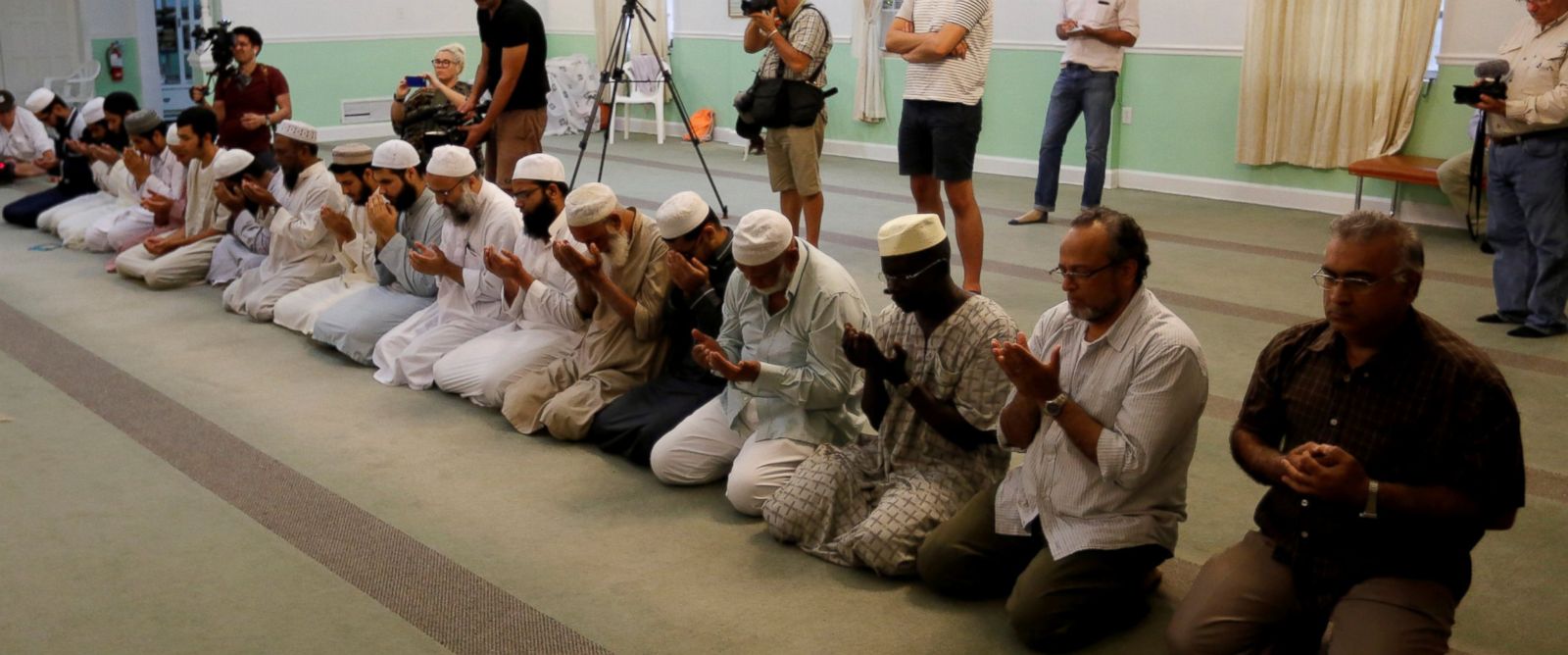


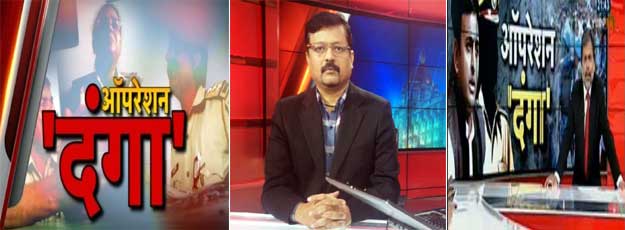
.jpg)
.jpg)



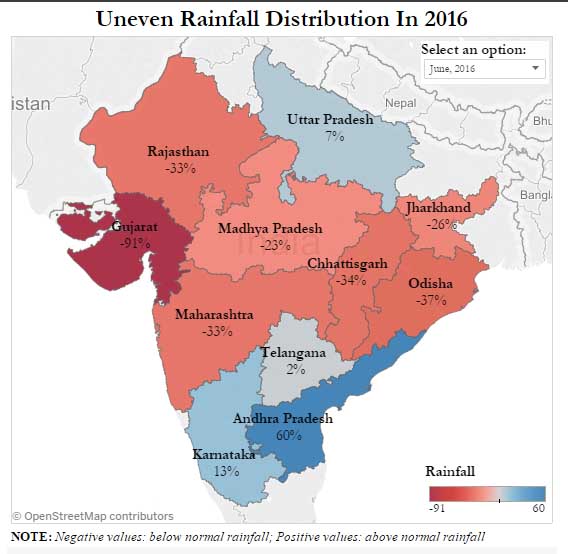
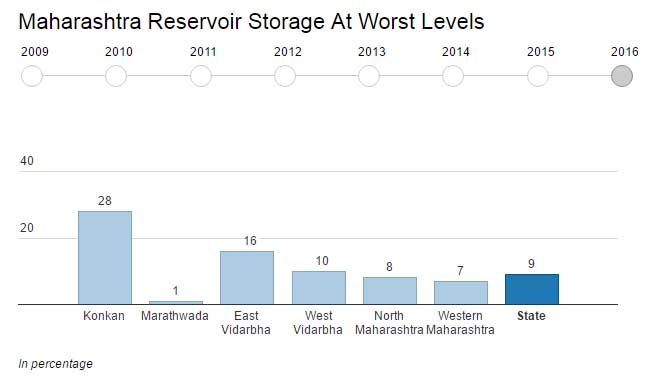
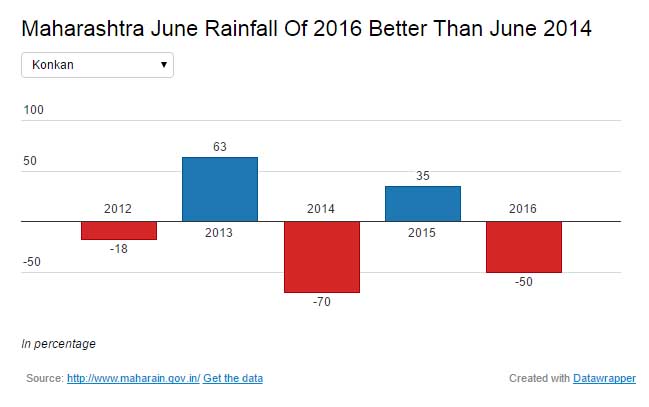
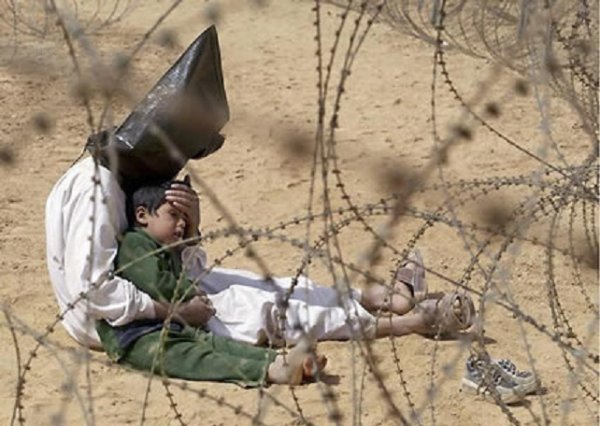

.jpg)
